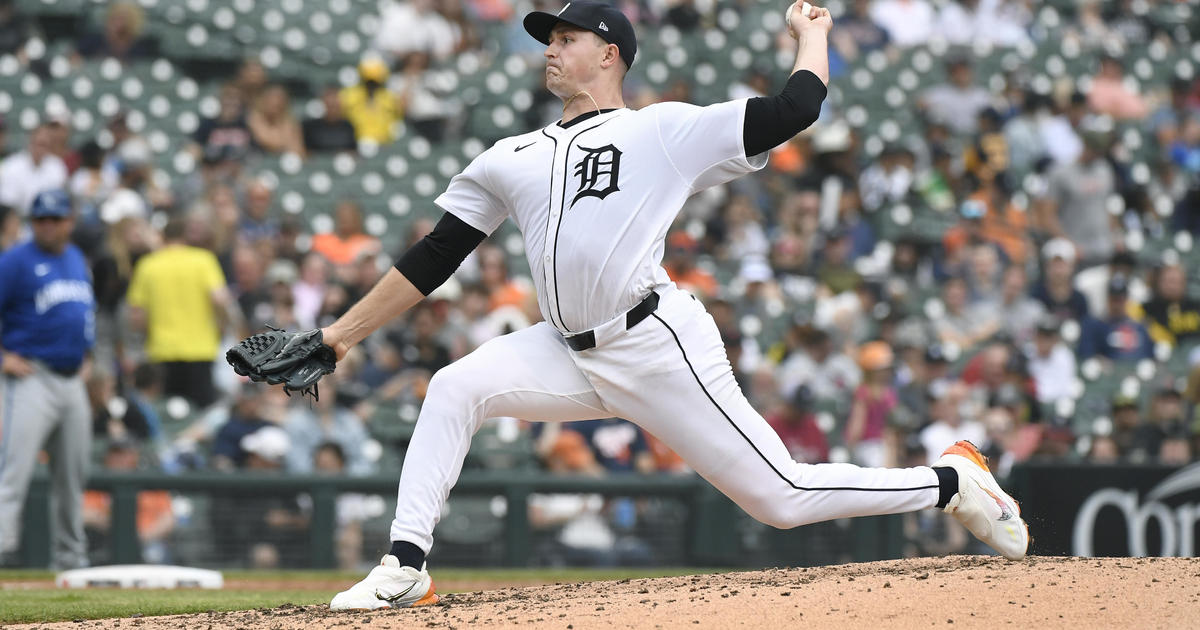Doctor Helps Shed Light On Groin Injury That Limited Miguel Cabrera
By Ashley Dunkak
@AshleyDunkak
One of the enduring storylines of the 2013 Detroit Tigers season was superstar Miguel Cabrera's groin injury. Several months in the season, it still looked as though Cabrera could be the first player ever to win the Triple Crown in consecutive seasons. By the end of the year, Cabrera could not run the bases, hardly moved in the outfield and even had trouble at the plate.
The Tigers revealed after the season that Cabrera had a Grade 2 or Grade 3 groin injury, one that would require surgery. The organization announced that Cabrera had a successful procedure and would be ready for spring training.
Dr. David Geier, an orthopedic surgeon and sports medicine specialist based in Charleston, South Carolina, offered insight on the type of injury and what kind of recovery Cabrera will likely undergo in the coming months. While not involved in Cabrera's care, Geier has served as a team physician for various organizations.
Cabrera's rehabilitation, like any after surgery, starts with rest.
"Usually a patient must avoid any activity that stresses that region for several weeks as the repair starts to heal," Geier said in an email. "He can usually then start riding an stationary bike or possibly light jogging. As the repair get stronger, he can add more functional movements and strengthening of that region. As long as there is no increase in discomfort in that region or other sign of a setback, he can be progressed through a return-to-sports program."
Publicly, the Tigers spoke vaguely of Cabrera's groin injury during the season but later got more specific by referring to it as a Grade 2 or Grade 3 tear.
"While it's an oversimplification, one can think of the different grades as a stretch of a muscle, a partial tear, and a complete tear," Geier said in an email. "Typically with lower abdominal muscles and the adductor muscles in the thigh and groin, side-to-side motions and twisting motions can be uncomfortable."
General manager Dave Dombrowski said doctors with whom the team consulted assured the Tigers that while rest would help Cabrera long-term, the amount of rest the Tigers could give him during the season would not make a difference. The injury would not heal while Cabrera was still playing, so the pain likely did not abate as the season progressed.
"Healing can vary depending on whether it is the adductor muscles or the lower abdominal muscles, a defect in the tissue overlying the lower abdominal muscles, or an injury where the tendons are pulled off the bone," Geier said. "The risk with many of these injuries is that if you allow player to return to sports activities before the injury has completely healed, he could reinjure it and have to start the healing process all over again."
Cabrera played through the injury, refusing to even see a specialist, Dr. William Meyers of Philadelphia, until both the organization and Meyers promised him he would not be sidelined. They complied, but as would be expected, the pain and weakness associated with the injury led Cabrera's production to drop precipitously.
April through August, Cabrera hit .358 with an on-base percentage of .449, a slugging percentage of .681 and an otherworldly on-base plus slugging percentage of 1.130. By the end of August, Cabrera had smacked 43 home runs and 130 RBIs.
In September, Cabrera hit .278 with a dramatically reduced slugging percentage of .333 and OPS of .729. Cabrera's power was gone. The injury hampered his running so much that he could not get past first base unless he hit the ball out of the park. It also compromised his ability to play defense at third base. Those two weaknesses came out full force when in one game Cabrera got thrown out at home easily and also committed an error. Cabrera is neither a fantastic third baseman or a great base runner normally, but he is serviceable in both respects. Add in the injury, though, and he was a liability in both.
Most likely, the coming season will be better for Cabrera.
"Typically these surgeries have good success rates in terms of getting back to play at the same level of ability as prior to the injury," Geier said. "For a baseball player, lingering pain in the abdominal or adductor muscles could manifest as difficulty twisting through the baseball swing or pushing off as the player runs out of the batter's box."
A pain-free Cabrera would make a big difference for the Tigers, and it sounds like he should be on track to do just that.



